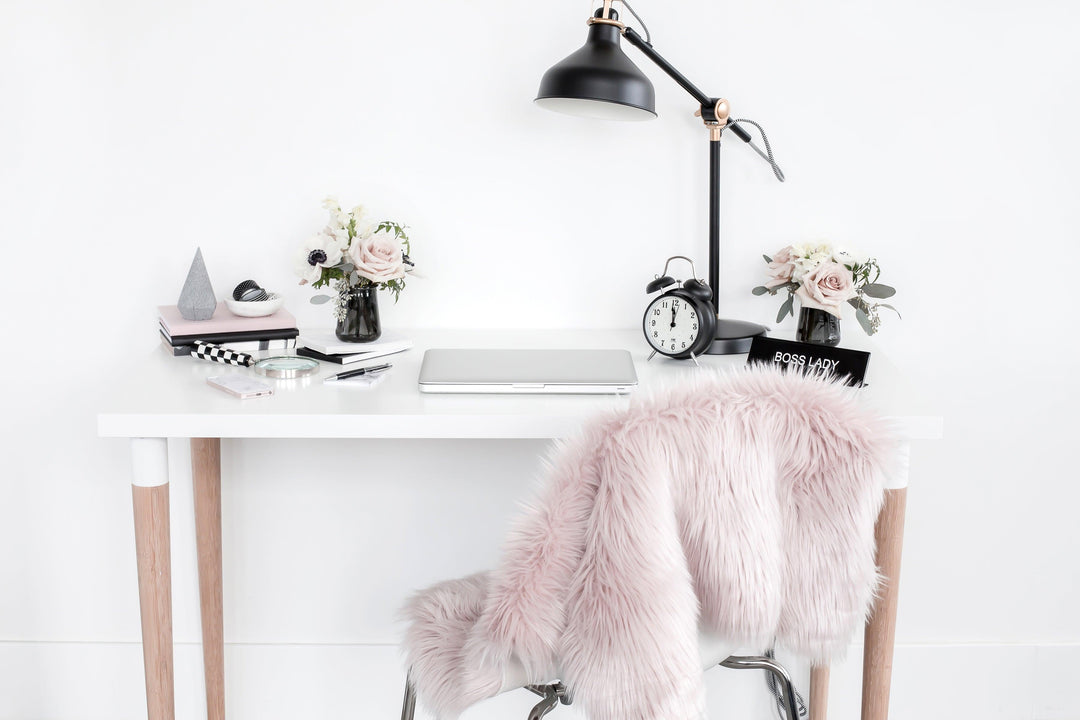4 Steps to a Logo That Brings Your Photo Business into Focus
Topic: Marketing, Branding
Time Investment: 5 Minutes
Suggested Product: Independent Contractor Bundle
Photographers may think they’re represented by the photos they take, but a professional logo really sums up all your work in a simple, recognizable design. And just as every great photo is the result of many skilled techniques, there are behind-the-scenes strategies for designing a good logo. As fine art photographer Neil Leifer said, “Sometimes the simplest pictures are the hardest to get;” likewise, it’s often the case that while the simplest logos are the most effective - they’re also the hardest to create. Here are a few basic steps to follow when having your logo designed.
1) Exposure: Do your research
To start your logo design process, take a look at what’s already out there. Checking out the competition can help you position yourself as relevant but distinct within the world of photography logos. You don’t want to repeat the overused, clichéd themes in your industry, so think about what you can do to distinguish yourself from potential competitors.

Simply typing “photography logos” into Google image search yields informative results.
As you see from these examples, equipment like cameras, lenses, and shutters are common in photography logo designs. Using these motifs might make you recognizable as part of your industry, but it runs the risk of making you look just like everyone else. That’s not to say that just because others have already used an idea or motif, you can’t, too. But if you’d like to incorporate one of these concepts, be sure to spend some time thinking about how you can add a personal twist.
2) Focus: Create your detailed design brief
Once you’ve got the feel for the industry at large, you can start focusing in on your own business, and defining what you’d like your logo to express.
To help a designer create a logo that will capture your idea for your business, you’ll be putting together a design brief. This should be a highly specific document or folder where you get as specific as possible. You want to lay out every aspect of what you’re looking for in a logo. The more clearly you lay out what you want, and the more detail and examples you provide, the more likely potential designers will be able to create something you’ll find appealing. You can use your industry research to offer designers visual examples of what you like and don’t like. You can also talk about the styles you prefer, the formatting, and the entire look and feel of the design.
Since creating a design brief can seem intimidating for those who are new to design, break it down into a step-by-step process by asking yourself some basic questions.
First, give your designer a sense of your business by asking yourself:
- To whom do I want this logo to appeal (i.e., who is my target audience?)
- What values do I want my logo to represent?
Then, define your aesthetic by asking yourself:
- What style do I prefer? Modern over retro? Elegant over corporate?
Use these real-life examples sourced through graphic design marketplace 99designs to get a better idea of the logo styles that are out there:



- What typography genre am I looking for?
Here’s a good resource for figuring this out: http://graphicdesign.spokanefalls.edu/tutorials/process/type_basics/type_families.htm
- What color palette would I like to see?
Do I prefer vertical formatting…

…or horizontal?

- What’s my logotype? Am I looking for a simple wordmark or would I like to see a graphic in the design? If there’s a graphic, should it be an object or an abstract image?
Answering these questions should be a process of discovery, where you let yourself be surprised by what you find. But if at the end you’re still not totally sure what you’re looking for, that’s ok! The next step is there to help you sort things out.
3) Develop: Give feedback to your logo designers
The logo design process is a collaborative effort between you and the graphic designer you are working with. This means feedback on your end is a necessary element to make the process flow, and designers will appreciate the effort you put into responding to their work.
Like creating your design brief, giving feedback may seem like an overwhelming task at first, but the key here is to be as thorough and honest as possible. The designers want to create something you’ll like, but to do so they need to know where their ideas aren’t in line with your taste. If you don’t like the way a certain element is angled, colored, or formatted, say so. You don’t have to use technical terminology or provide a justification—just call it like you see it!
4) Exhibit: Choose your final design
At the end of this process, you will have a few alternatives to choose from. There are three basic criteria you can use in selecting the final design:
- Adaptability: Make sure your design can adapt to multiple applications. Think about how it will look large and small, on a screen, in print and on fabric. In this day and age, your design will need to be able to hold up when viewed on a large screen, a mobile device, apparel, or even a building.
- Differentiation: Ultimately, you want to distinguish yourself from your competitors, and this process should start with your logo. Make sure there is something about your logo that is personal to you.
- Relevancy: As much as you want to differentiate yourself from your competitors, always stay close to your industry, your brand, and the values you want to express to your target audience.
As a photographer, you are represented by your work. But a good logo can introduce people to your style and values before they’ve ever seen any of your photos. It’s worth putting some time into getting a great logo design—and, armed with these tips, you’re well on your way!
** ** Thanks to Kelly Inglis with online graphic design marketplace 99designs for this guest post! Kelly is a Community Liaison at 99designs, where she produces educational content for their global community of designers & helps them effectively utilize 99designs. A graduate of UC Berkeley, Kelly lives in San Francisco where she can often be found enjoying the park & café scenes with a good book. ** **
Now on to some legal tips by yours truly to go along with your awesome logo design knowledge!
Tips of Logo and Advertising Use
- Mark all your images – A super awesome way to identify your work with this logo is using BlogStomp – a super quick resizing, collage and watermarking tool!
- Proper Name – Make sure you’re using your actual registered business name – if you’re not, make sure you have a “doing business as” in place!
- Website Privacy – If you’re using your site on your business cards and other marketing materials make sure you have a privacy policy and terms in place for your site – make these readily available to your audience as well.
- Always be truthful – sounds funny to remind you of this huh? But sometimes advertising can borderline vague and deceptive if not careful! Don’t want any misunderstandings or misrepresentations!
Legal Tips for Hiring a Logo Designer
- Always use a contract – even a standard independent contractor agreement can suffice to outline the duties and responsibilities
- Change details – Make sure you identify how many changes they will make and any extra fees that may be assessed
- License Form – Ask for a copy of the license of use for the graphics use – unless the designer transfers copyright they will have ownership and you receive a license of use – not much unlike a print release for photographers (see Copyright release vs Print release)
- Exclusive Use – Ensure your contract and designer are on the same page with exclusive use. You don’t want logo designs floating around the marketplace that are identical to yours. No sense in investing in a logo if it is a cookie-cutter option that someone else is receiving.



